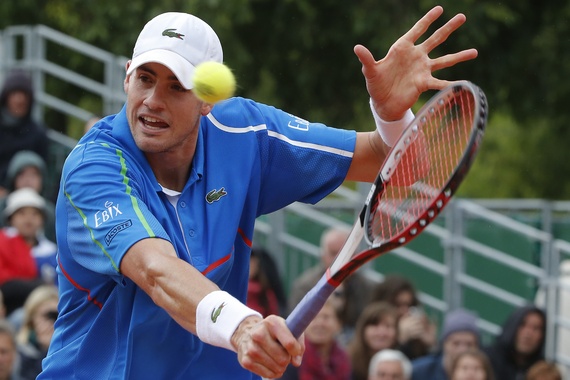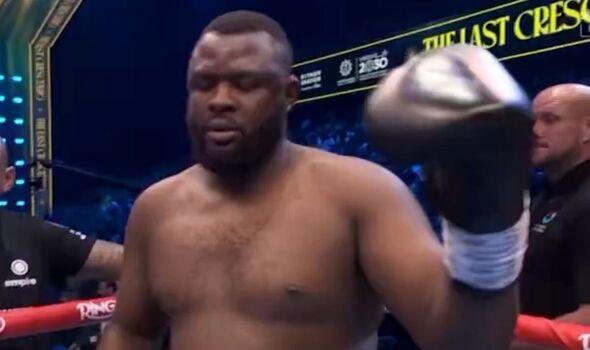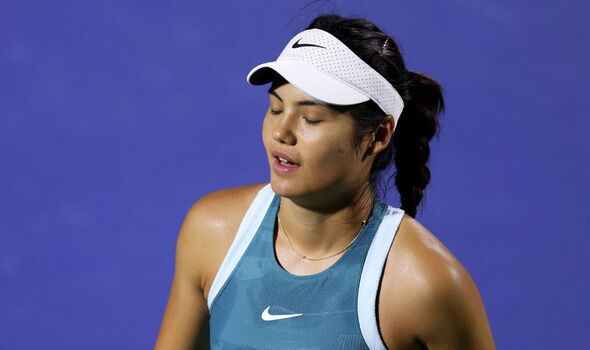
Neanderthals and humans had ample time for interbreeding
August 22, 2014
Hendersonville man sues over ‘Cold Justice’ TV show
August 23, 2014For yet another year, American men will be underdogs at the U.S. Open. An American male has not won a Grand Slam Singles title since Andy Roddick did so at Flushing Meadows in 2003. There has not been an American man ranked in the top five at the year’s end since 2005. Today, other than John Isner, who reached as high as 9th and seems to have plateaued at between 10 and 15 in the world, the United States does not have a player inside the top 40. To reach the Semi-Finals of this year’s Open, Isner would likely have to defeat Novak Djokovic in the round of 16 and Andy Murray in the quarter-finals.
This U.S. tennis drought may have even begun before Roddick’s 2003 win. There hasn’t been a truly dominant American men’s singles player since Andre Agassi and Pete Sampras were in their primes near the turn of the millennium.
Earlier this year, the New York Times quoted a number of tennis observers who say that young American men have the talent to succeed, but lack “world-class work ethic and toughness.” Yet that’s not an explanation for America’s problem—it’s a symptom of it. Cultural, athletic, and business factors been offered as factors contributing to America’s tennis’s woes in recent years. Here are a few of those factors.
Courts
American juniors train on hard courts, while Europeans and South Americans learn the sport on clay. Both The Economist and The New Republic have theorized that in recent years, the sport has shifted to favor players raised on clay, a “slower” surface.
“As developments in racket and string technology have allowed players to generate more power, approaching the net has become riskier,” says The Economist. “Facing criticism that too much serve-and-volley tennis had made the sport boring to watch, the organizers of Wimbledon, the most important tournament of all, are widely believed to have fiddled with its grass courts to make the ball bounce higher. Meanwhile, players are fitter and more athletic than ever before, and defensive abilities have grown as a result.”
A player who learns on a faster surface will base his game on a big serve and powerful groundstrokes, and a player who learns the game on a slower surface will construct points in order to win longer, more grueling rallies. Indeed, this theory holds when examining America’s best players, both currently and historically. Isner has the most devastating serve on the ATP tour but is not particular intimidating mid-rally. Roddick, Sampras, McEnroe, and Connors all lead with their serves. Andre Agassi is the only great American not known for an extraordinary serve, and, fittingly, he is the only great American whose success extended to clay courts.
College
In college-sports-obsessed America, teens often parlay their tennis talents into an athletic scholarship and play throughout their undergraduate years. In Europe, sports are not seen as tickets into universities, as athletic competition between schools is not emphasized and athletic scholarships are extremely rare. So European juniors go pro as soon as they can.
The U.S. tennis community is torn as to whether attending university is the best decision for someone whose goal is to reach his tennis potential. Proponents of college note that the game has become much more physical in recent years due to advances in racket technology, and, as a result, the average age of the top 100 players is around 27, far older than before the turn of the millennium.
“All those factors make going to college and developing your body while in school, rather than traveling the world and playing low-level future events every week, a very appealing option to top juniors,” says Dustin Taylor, an assistant coach at the University of Virginia.
Lawrence Kleger of the McEnroe Tennis Academy believes that going to college should be “a case-by-case decision,” even if some critics accuse junior players who opt for higher ed as not being “all-in.” The logic behind that critique is that a player will never reach the top of the sport unless he fully commits to it at a young age.
Judging by the rankings, the critics might have a point: Very few top 100 players went to college, and even fewer graduated. John Isner, who only joined the ATP tour after finishing at the University of Georgia, is an outlier. Bulldogs coach Manny Diaz defends Isner’s decision to go to college: “I think college is the best path for 99 percent of guys who are trying to become the best they can be. Andy Roddick was on the way to college until he went on a rampage and won the Orange Bowl and the Australian Open Juniors. Sampras, Agassi, and Courier all won ATP Tour events by 18. They were on accelerated paths.”
Training
Another commonality between Sampras, Agassi, and Courier is that they all spent time at the IMG Tennis Academy in Florida in the late ‘80s. The United States relies on major tennis academies such as IMG, Saddlebrook, and McEnroe Academy for developing promising juniors. These academies still produce high-quality players, but they have not had an alumnus ranked in the top five since Roddick. In fairness, it is not just the major American academies that have been striking out. Of the 10 players who have been ranked in the top five within the last five years, only Djokovic and Murray attended a major tennis academy. The others have relied on either local or national training centers for top-level coaching and competition.
America’s reliance on academies, not centers, may be hurting its chances. Academies ensure prospects will get plenty of on-court experience, but tennis experts are beginning to realize what a drawback it is that these institutions remove students from family and friends.




